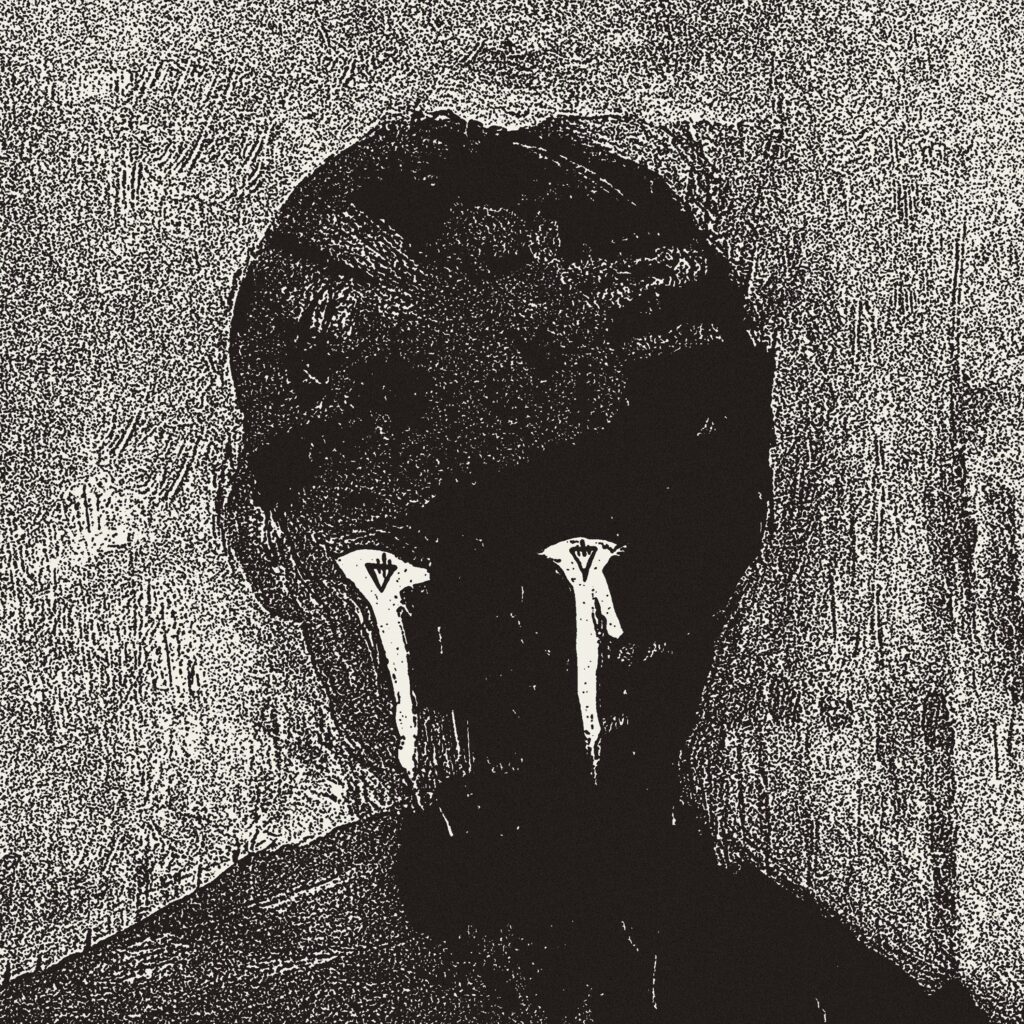

Broken
Contrast gives art dimension. The juxtaposition of two seemingly disparate elements sparks friction, bringing life to any canvas. The Devil Wears Prada rely on contrast as they nimbly balance metallic turbulence, hardcore spirit, provocatively eloquent lyricism, and melodic exorcism. In between these opposing extremes, the band—Mike Hranica [vocals], Jeremy DePoyster [guitar, vocals], Kyle Sipress [guitar], Jonathan Gering [keys, synths, programming, production], Giuseppe Capolupo [drums], and Mason Nagy [bass]—have fashioned an ever-evolving signature style buttressed by layers of sonic hues. Such dynamic divergence defines the group’s eighth full-length offering, Color Decay [Solid State].
“It’s about contrast,” observes Mike. “We’ve really tried to create individualism within the songs and make them distinct. The title references the disintegration and discoloration we experience from daily struggles. Those feelings come with mental health, getting older, and dealing with it. We confront these fights over a lengthy period of time. This record goes up and down, which I’ve always liked for an LP. You will want to listen to it from front-to-back.”
“It’s a transparent look inward at what it’s like to be a mid-30-year-old trying to find a balance,” Jeremy adds. “You have to work, hang out with your family, pay attention to your friendships, and still take care of yourself. The music is the moment you can be your total self though. It’s a safe place to release those emotions that are hard to open up about.”
They’ve harbored this space since forming in 2005. Speaking to the band’s growing influence, fans voted 2009’s With Roots Above and Branches Below one of the “5 Greatest Metalcore Albums” in a Revolver poll as the outlet christened it “a true metalcore landmark.” The group have notched six consecutive Top 5 debuts on the Billboard Top Hard Rock Albums Chart, including Dead Throne [2011], 8:18 [2013], Space EP [2015], Transit Blues [2016], The Act [2019], and ZII EP [2021]. The latter served as a sequel to one of their most beloved projects 2010’s Zombie EP. Upon arrival, mxdwn applauded ZII as “phenomenal,” and Metal Injection went as far as to claim, “This mini-concept has outlived the zombie revival.” In the wake of the EP, the group exceeded a-quarter-of-a-billion cumulative streams and views.
During 2021, the musicians decamped to remote hideaways together in Wisconsin and Desert Hot Springs, California. This time around, Jon took the reins as producer, collaborating closely to assemble a rich sonic architecture for what would become Color Decay.
“We feel very comfortable in the process we’ve established by working with a producer who’s literally in our band,” smiles Jeremy. “Mike and I have been doing this for 17 years now. Jon took on the role of project leader and figured out how to extract the best parts from everyone and put them into a unified piece. He excelled on ZII and pulled an amazing story out of Mike. It turned into a super collaborative project. We articulated these dark themes and melodies and connected them musically.”
“We created a lot of momentum with ZII and felt very rewarded by the positive experience,” Mike adds. “It steamrolled into these new songs. I tried to paint with a broad brush and did my best to color the vision.”
They initially teased out the record with “Watchtower” and “Sacrifice,” generating excitement and anticipation. Setting the stage for Color Decay, a driving riff uplifted by luminous keys gives way to a subdued verse on the single “Salt.” Melodic vocals hover above an otherworldly soundscape before snapping back into a hypnotic hook, “Pour the salt into the wounds, let the rain wash over you.”
“It’s a resignation to suffering,” Mike notes. “It essentially says, ‘I’m already beaten down, so keep pouring salt into the wound. Why not?’ It’s a realistic reaction. Go ahead. Push me off the edge now.”
Then, there’s “Time.” An airy intro bleeds into a pummeling groove punctuated by vicious vocals before eventually spiraling towards what Mike describes as “the goth dance party.”
“As much as the songs look inward, there are some bigger narratives,” the frontman goes on. “I wanted to blow the ceiling off what I view as the cliches within heavy music. Sonically, ‘Time’ goes to some awesome places. In real life, time itself moves incredibly fast, but it moves incredibly slow. The song addresses that.”
“Broken” translates tense emotions into a cathartic chorus, “I know I’ve got my problems.”
“Jon struggles with anxiety, and most of the guys in the band do to a certain degree,” Jeremy states. “A lot of the lyrics detail a very personal experience with anxiety. The content is relatable, but it’s in another lane for us.”
Warbling vocals groan between menacing synths and crunching distortion on the head-bashing “Hallucinate.” Mike screams, “I’d do anything for some kind of relief.”
“I was reading The Morning Star,” Mike reveals. “It switches between these different perspectives. One of them belongs to a nurse who’s taking care of a patient struggling with a brain tumor. As the tumor expands in your brain, it can cause pain and hallucinations. The track is essentially about a person hallucinating alone in a hospital bed and seeing these horrific images. It’s a narrative song, and its industrial nature really spoke to me. I don’t think it’s like anything we’ve ever done before.”
Color Decay concludes with the heart-wrenching finale “Cancer.” Guitar marches underneath a searing refrain, “I hope that it’s cancer and not something else, because I don’t need anymore things I don’t want to talk about.”
“One of Jon’s heroes passed away and the first thing he thought was, ‘I hope he died peacefully rather than from suicide or a drug overdose’,” says Mike. “It’s an introspective look at how difficult it can be to watch your heroes pass away from all of these terrible ways and the guilt of this immediate thought about how this person died.”
By contrasting these extremes, The Devil Wears Prada achieve balance like never before.
“There’s a focus to the album we haven’t had in a very long time,” Jeremy leaves off. “Coming out of the last 2 years, we’ve reflected on what is important to us—playing in this group and performing live. This record proves we’re not going anywhere. In our minds, we’re very focused on continuing to deliver the best possible music we can.”
“We fought so hard for this, and this album represents where we’re at now,” Mike concludes. “We’ll die on the hill of being The Devil Wears Prada. I believe you can define our band by Color Decay.”

